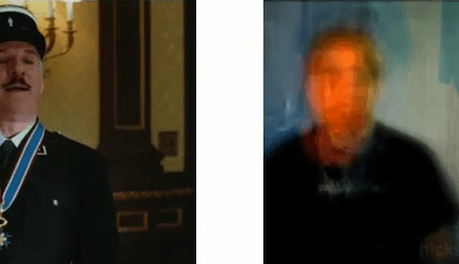Scientists Capture Thoughts on Video
September 27, 2011
on
on

Neuroscientists were able to record the visual experience of people and translate it into video images.
Professor Jack Gallant and a team of researchers of the University of California, Berkeley study the visual system of the brain. To get a better understanding of how the human brain works, they are developing brain decoding devices.
The visual system isn’t a single unit but a network of interconnected areas. When the human brain experiences an image each area records a small part of it. While one area records motion another records texture. This activity can be understood as encoding the information contained in the image. Further along in the process the information is decoded and the brain experiences the information as a unified visual experience.
The neuroscientists are trying to read how the brain encodes a visual image in order to be able to decode that information outside of the brain.
In this case the researchers recorded the brain activity of people while they were watching movies. The recorded brain signals provided a model of how the brain encodes visual scenes. The model was fed to a computer and it was given the same movies as a decoding key. This way the computer could make a map of what particular brain signals represented.
The test subjects were then shown a second round of movies. But these weren’t given to the computer. Instead it was given access to 18 million seconds of Youtube footage. Based on the brain activity recorded from the test subjects the computer had to reconstruct the image using the Youtube stock material as building blocks.
Although the reconstruction given by the computer is still far from accurate it is definitely the first time in human history that the privacy of the mind is about to be wrested from us by technology.
More information at: Gallantlab.org
The findings were published in the September issue of Current Biology
Professor Jack Gallant and a team of researchers of the University of California, Berkeley study the visual system of the brain. To get a better understanding of how the human brain works, they are developing brain decoding devices.
The visual system isn’t a single unit but a network of interconnected areas. When the human brain experiences an image each area records a small part of it. While one area records motion another records texture. This activity can be understood as encoding the information contained in the image. Further along in the process the information is decoded and the brain experiences the information as a unified visual experience.
The neuroscientists are trying to read how the brain encodes a visual image in order to be able to decode that information outside of the brain.
In this case the researchers recorded the brain activity of people while they were watching movies. The recorded brain signals provided a model of how the brain encodes visual scenes. The model was fed to a computer and it was given the same movies as a decoding key. This way the computer could make a map of what particular brain signals represented.
The test subjects were then shown a second round of movies. But these weren’t given to the computer. Instead it was given access to 18 million seconds of Youtube footage. Based on the brain activity recorded from the test subjects the computer had to reconstruct the image using the Youtube stock material as building blocks.
Although the reconstruction given by the computer is still far from accurate it is definitely the first time in human history that the privacy of the mind is about to be wrested from us by technology.
More information at: Gallantlab.org
The findings were published in the September issue of Current Biology
Read full article
Hide full article


Discussion (1 comment)